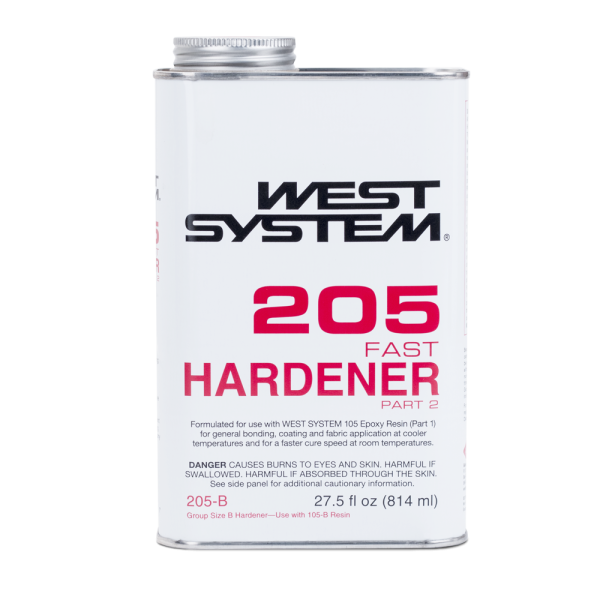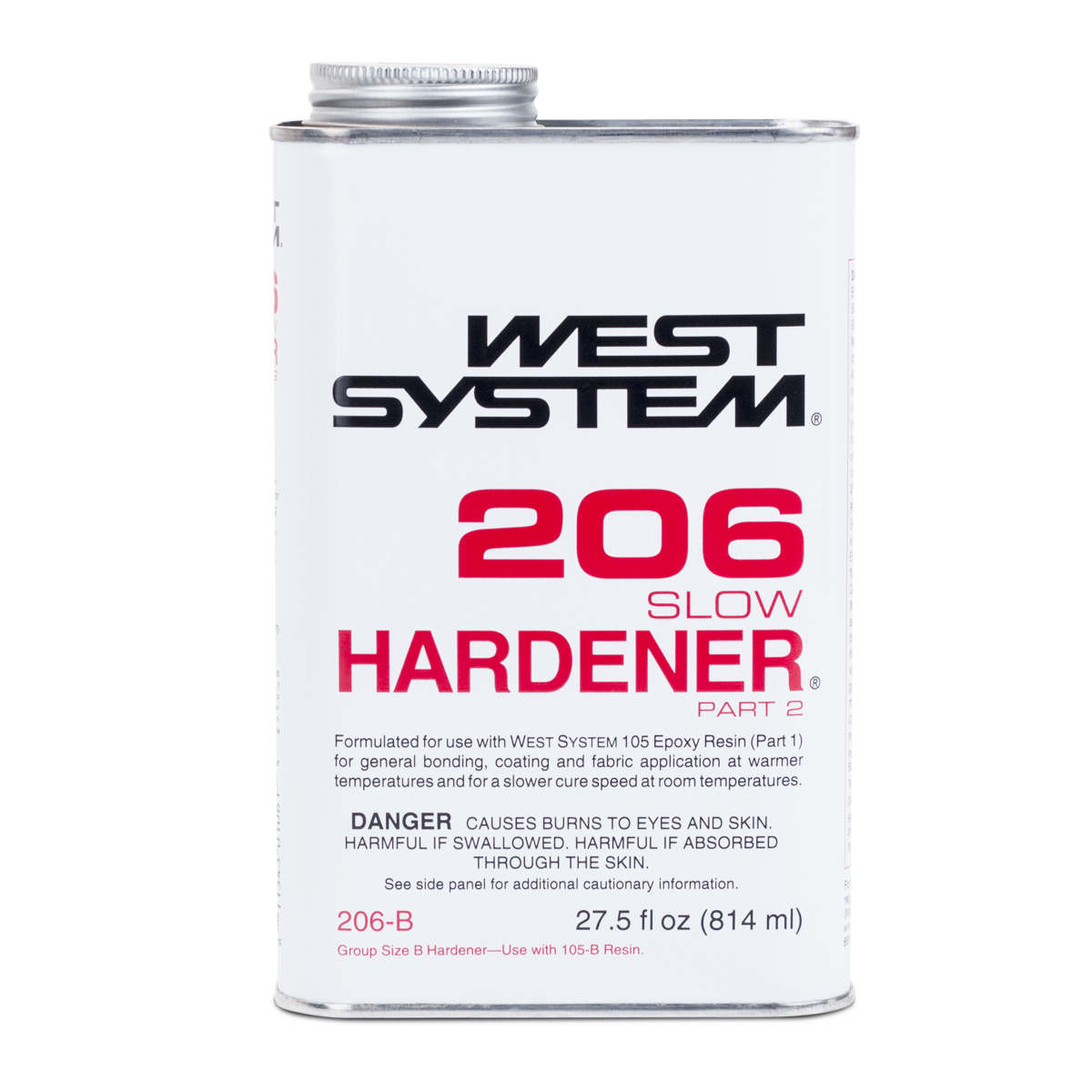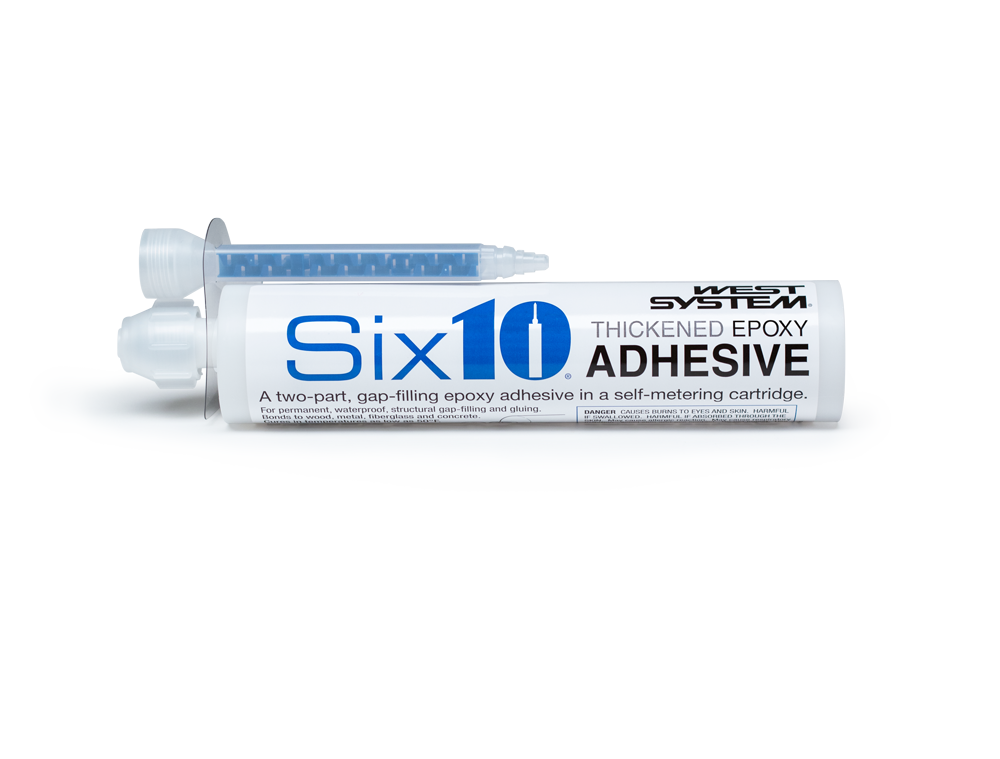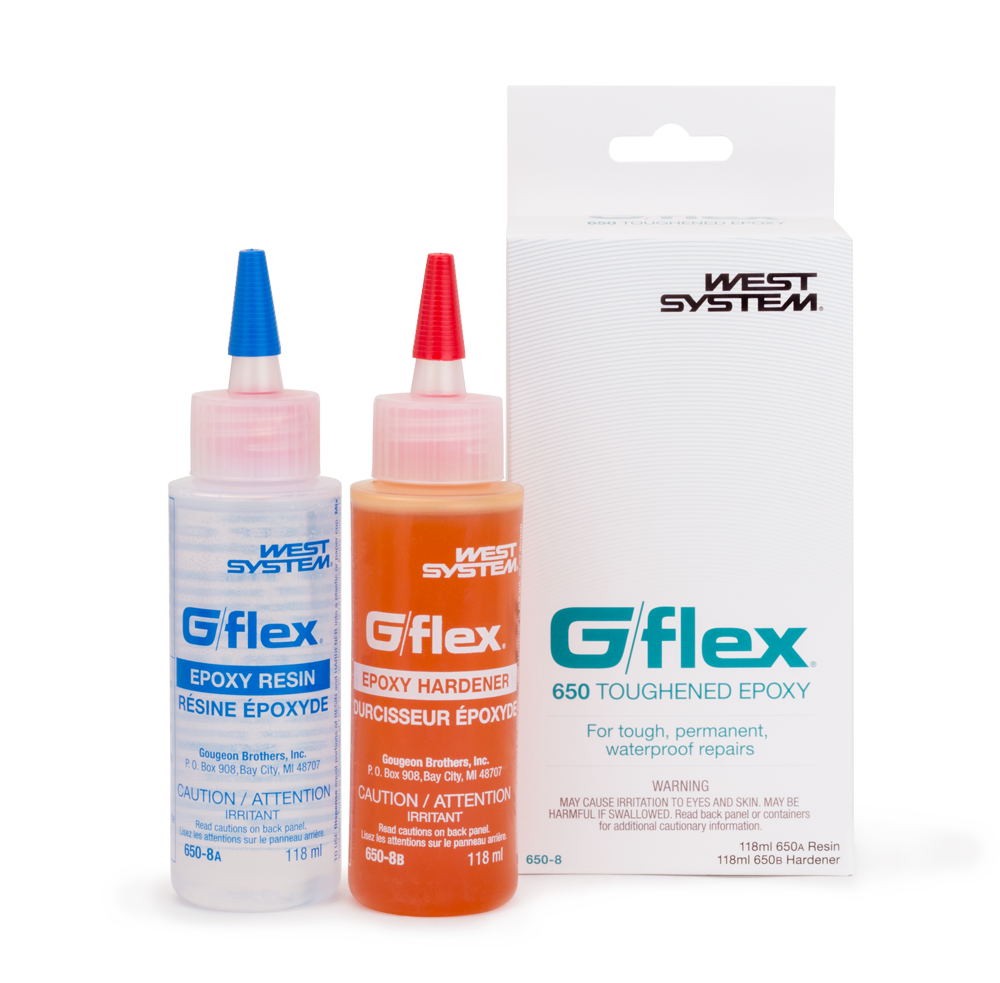ASTM Testing
We compare WEST SYSTEM Epoxy physical properties using ASTM scientific tests. In laboratory comparisons of epoxy physical properties, test specimens are cured at room temperature for two weeks, unless otherwise noted. The table below lists typical physical property values. These should not be construed as specifications. Neat epoxy specimens (i.e., containing no fillers or fiber reinforcements) were used for testing.
Compare Epoxy Physical Properties |
||||||
|---|---|---|---|---|---|---|
| EPOXY PHYSICAL PROPERTIES |  105 Epoxy Resin/205 Fast Hardener |  105 Epoxy Resin/206 Slow Epoxy Hardener |  105 Epoxy Resin/207 Special Clear Hardener |  105 Epoxy Resin/209 Extra Slow Hardener |  Six10 Thickened Epoxy Adhesive |  650-32 G/flex Toughened Epoxy |
| Mix Ratio by weight* | See Data Sheet | See Data Sheet | See Data Sheet | See Data Sheet | See Data Sheet | See Data Sheet |
| Mix Viscosity @ 72°F (cPs) | 975 | 725 | 760 | 650 | gel | 15,000 |
| Pot Life of 100 g @ 72°F (min.) | 12 | 21.5 | 22 | 45 | 42 | 45 |
| Specific Gravity of Cured Resin | 1.18 | 1.18 | 1.15 | 1.16 | 1.18 | 1.11 |
| Hardness @ 2 weeks (Shore D) | 83 | 83 | 84.4 | 82 | 80.6 | 75 |
| Compression Yield @ 2 weeks (PSI) | 11,418 | 11,500 | 11,043 | 11,960 | 9,693 | 5,268 |
| Tensile Strength (PSI) | 7,846 | 7,320 | 6,748 | 7,280 | 6,438 | 3,440 |
| Tensile Elongation (%) | 3.4 | 4.5 | 3.8 | 3.6 | 7.9 | 32.7 |
| Tensile Modulus (PSI) | 4.08E+05 | 4.60E+05 | 4.40E+05 | 3.98E+05 | 3.71E+05 | 1.44E+05 |
| Flexural Strength (PSI) | 14,112 | 11,810 | 11,324 | 12,459 | 11,320 | 5,192 |
| Flexural Modulus (PSI) | 4.61E+05 | 4.50E+05 | 4.12E+05 | 3.97E+05 | 3.51E+05 | 1.56E+05 |
| Heat Deflection Temperature (°F) | 118 | 123 | 117 | 117 | 127 | 127 |
| Onset of Tg by DSC (°F) | 129 | 126 | 116 | 122 | 127 | 138 |
| Ultimate Tg by DSC (°F) | 142 | 139 | 116 | 130 | 133 | 154 |
General Characteristics of WEST SYSTEM Epoxies
WEST SYSTEM Epoxy resin and hardeners are the base components of two-part, marine-grade epoxy originally developed specifically for use in boat building. Our epoxy and additives are formulated to provide maximum physical properties and, at the same time, to be as easy to use as possible. WEST SYSTEM products are designed to be mixed on-site in the specific formulations needed for various jobs. Builders and repairers can select from a range of hardeners and additives to tailor the epoxy mixture’s handling characteristics and the physical properties of the cured epoxy to suit the working conditions and requirements of their specific coating or bonding job.
WEST SYSTEM epoxies cure to a hard, solid plastic with superior mechanical properties. When small amounts of filler are added to mixed resin and hardener, WEST SYSTEM 105 Resin-based epoxy becomes a very strong, gap-filling adhesive. Joints bonded with these epoxy mixtures are often stronger than the fibers that surround them. Other combinations of WEST SYSTEM epoxy and fillers produce mixtures that can be used in fairing and filleting. WEST SYSTEM Epoxy is an excellent medium for transferring loads from wood fiber to metals. It will serve as an efficient interface for distributing high-point loading over greater surface area than would otherwise be possible. WEST SYSTEM Epoxy products will bond to fiberglass, aramid (Kevlar™), graphite, and other synthetic fibers in structural and reinforcing applications.
The success of any epoxy composite depends in part on the epoxy’s ability to shield the substrate from moisture. While no epoxy forms an absolute moisture vapor barrier, as little as two coatings of WEST SYSTEM Epoxy will impede the passage of moisture vapor to such an extent that the moisture content of the epoxy encapsulated substrate remains stable. Epoxy controls the fluctuations of moisture content, improving mechanical properties and dimensional stability. When used to encapsulate wood, epoxy restricts both moisture and oxygen, making it impossible for dry rot fungi to survive.
A WEST SYSTEM Epoxy moisture barrier also creates a stable base for paint and varnish. Wood surfaces protected with coatings of WEST SYSTEM Epoxy cannot become saturated with water. Paint adheres better, with less cracking and lifting, than it does on substrates without the benefit of an epoxy coating.
Epoxy will bond at room temperatures with little clamping pressure, so few specialized tools and molds are needed. As a result, project overhead can be drastically reduced, and parts manufacturing is more flexible with epoxy.
Our body of knowledge about epoxy composites grows with each day of testing. Current product data is published in our How-To Manuals, Epoxyworks Magazine, and here on our website. Our technical staff is always available to answer any questions you may have.
